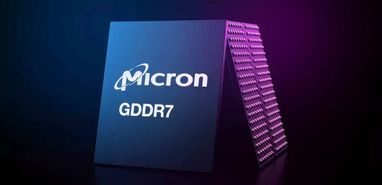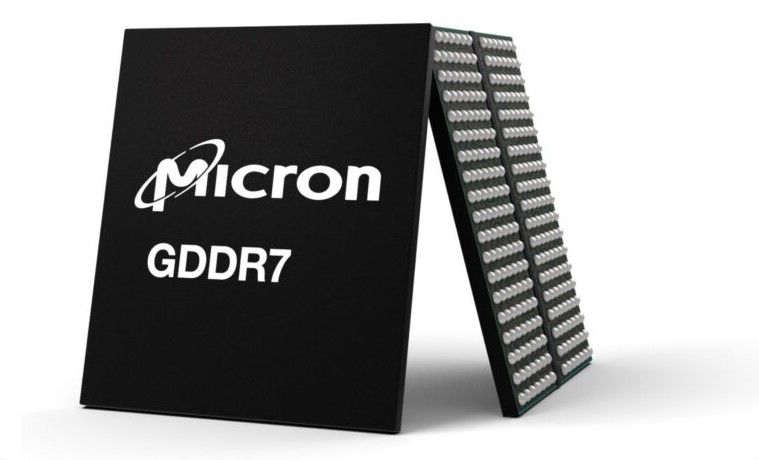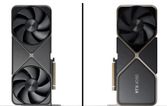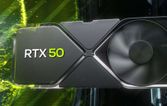
Micron Announces GDDR7 Memory: 32 Gbps Speeds, Over 1.5 TB/s Bandwidth, and 30% Gaming Performance Boost
Micron has unveiled its next-gen GDDR7 memory, featuring 32 Gbps speeds and PAM3 signaling for advanced GPUs from NVIDIA and AMD.
Micron’s Next-Gen GDDR7 Memory Delivers 30% Gaming Performance Boost Across All Resolutions Micron Technology has announced the sampling of its next-generation GDDR7 graphics memory, boasting the industry’s highest bit density.
Utilizing 1β (1-beta) DRAM technology and innovative architecture, Micron GDDR7 provides 32 Gb/s high-performance memory in a power-efficient design. With over 1.5 TB/s of system bandwidth, which is 60% higher than GDDR6, and four independent channels to optimize workloads, GDDR7 memory enables faster response times, smoother gameplay, and reduced processing times.
GDDR7 also offers over 50% power-efficiency improvement compared to GDDR6, resulting in better thermals and longer battery life, while the new sleep mode reduces standby power by up to 70%. Advanced reliability, availability, and serviceability (RAS) features on Micron GDDR7 enhance device dependability and data integrity without sacrificing performance, making it suitable for AI, gaming, and high-performance computing workloads.
Micron GDDR7 memory enhances performance, increasing throughput by up to 33% and reducing response time by up to 20% for generative AI tasks such as text-to-image creation.
Additionally, Micron anticipates that graphics cards using GDDR7 will provide a more than 30% improvement in frames per second (FPS) for ray tracing and rasterization over current GDDR6 and GDDR6X trends across 1080p, 1440p, and 4K resolutions. The introduction of GDDR7 completes Micron’s industry-leading product portfolio for edge AI inference applications on CPU, NPU, and GPU components with DDR, LPDDR, and GDDR memory options. For gaming applications, the next-gen memory enables AI-enhanced gameplay with adaptive landscapes, characters, and storylines through performance and frame buffer scaling.
With over five years of successful high-volume manufacturing of GDDR6X, Micron has consistently delivered world-class performance and quality. These same attributes — along with mature technology, design, and test experience — will help accelerate the adoption of GDDR7 and provide full-spectrum support for the product’s manufacturing ramp.

Micron introduced PAM4 signaling on GDDR6X, delivering leadership performance with more than a 20% improvement over GDDR6. This success with PAM4 lays the foundation for Micron’s continued GDDR7 portfolio leadership with PAM3. Engineering advancements, such as achieving the industry’s first 40 Gb/s PAM3 performance, pave the way for higher performance in future GDDR7 products.
GDDR Graphics Memory Evolution:
| GRAPHICS MEMORY | GDDR7 | GDDR6X | GDDR6 | GDDR5X |
|---|---|---|---|---|
| Workload | Gaming / AI | Gaming / AI | Gaming / AI | Gaming |
| Platform (Example) | GeForce RTX 5090? | GeForce RTX 4090 | GeForce RTX 2080 Ti | GeForce GTX 1080 Ti |
| Die Capacity (Gb) | 16-64 | 8-32 | 8-32 | 8-16 |
| Number of Placements | 12? | 12 | 12 | 12 |
| Gb/s/pin | 32-37 | 19-24 | 14-16 | 11.4 |
| GB/s/placement | 128-144 | 76-96 | 56-64 | 45 |
| GB/s/system | 1536-1728 | 912-1152 | 672-768 | 547 |
| Configuration (Example) | 384 IO (12pcs x 32 IO package)? | 384 IO (12pcs x 32 IO package) | 384 IO (12pcs x 32 IO package) | 384 IO (12pcs x 32 IO package) |
| Frame Buffer of Typical System | 24 GB? | 24 GB | 12GB | 12GB |
| Module Package | 266 (BGA) | 180 (BGA) | 180 (BGA) | 190 (BGA) |
| Average Device Power (pJ/bit) | TBD | 7.25 | 7.5 | 8.0 |
| Typical IO Channel | PCB (P2P SM) | PCB (P2P SM) | PCB (P2P SM) | PCB (P2P SM) |
Ecosystem partners on the GDDR7 memory solution:
“At AMD, we are committed to creating the most immersive gaming experiences. Our collaboration with Micron on GDDR7 advances our shared goal,” said Joe Macri, senior vice president and corporate fellow at AMD. “We are excited about Micron’s launch of GDDR7 and look forward to leveraging this technology to make gaming even more responsive and lifelike.”
“Cadence has a strong history of collaboration with Micron to develop industry-leading memory IP subsystem solutions for GDDR, HBM, DDR, and LPDDR,” said Boyd Phelps, senior vice president and general manager of the Silicon Solutions Group at Cadence. “We are using samples of leading 1β DRAM technology-based memory to test and validate GDDR7 PHY IP operating at speeds up to 36 Gb/s.”
GDDR7 memory will be available directly from Micron and through select global channel distributors and resellers in the second half of the calendar year 2024.








By Andrej Kovacevic
Updated on 14th July 2024